Excellence in Printed Liturgical Programs
-
Unsurprisingly, the proportion of
inexperiencedeven experienced churchgoers who've apparently forgotten they're practicing Catholics is fairly high at funerals, weddings, 15eras, Holy Thursday, Easter, Christmas Midnight Mass..................................................
Fixed. -
One has to also remember visitors. Here different dioceses have varying postures. I forget, when I go home to visit, to remain standing after communion, for the Agnus Dei and to rise after the Memorial Acclamation, as opposed to the Amen. I'm a practising Catholic, but a confused one!
-
I'm a practising Catholic, but a confused one!
More practice is required. (For all of us.) -
How do you get to
Carnegie Hall?be a good Catholic?
Practice, practice, practice! -
and please Lord let it always be so. Weddings, too; and why not?the proportion of inexperienced churchgoers is fairly high at funerals. -
MJO: The RP is “responsorial” still in the sense that it is a “response” to the first reading.
(The responses are still in there on a temporary basis, while people are getting used to the idea of singing all of it. I’m still working on that … slow-going.)
Singing the RP in this manner solves a couple logistical problems at Annunciation, but bigger than those is one that’s common to every parish: a source of much of our grief in church music, IMO, is the “cult of the solo singer”. I simply think it is unproductive in our culture to build into the liturgy a structure that demands a trained, rehearsed solo singer (besides the priest). -
I agree with Chonak. It depends on what sort of congregation you are preparing for. A regular mass going congregation can absorb a few non-regulars who can follow their lead; at typical events here, such as Masses for first holy communion or confirmation , funerals, weddings etc, the overwhelming majority will not know basic things like that they should stand or kneel at all, or not to talk during the consecration and so on. There may be one or two who know what they are doing, but that will not be obvious as everyone around them is giving it their best guess.
so direction printed as well as spoken from the front are useful. -
Felipe, and some others -
There seems to be persistent, and even cultivated, misunderstanding and misinformation about this: the responsorial psalm is called 'responsorial psalm' precisely because it is sung responsorially; that is, with the congregation singing a 'responsory' in response to a cantor's solo verses. If it is not sung responsorially it is, obviously, not a responsorial psalm. It is then, depending on its manner of performance, an antiphonal psalm, or a psalm in directum. This has absolutely nothing to do with the incidental fact that it follows the lesson. I seem to remember that this subject was dealt with earlier in the year on another thread.
Here, again, for those who missed it, are the three methods of singing psalmody:
Antiphonal:
Groups A and B sing the Antiphon,
Group A sings a verse,
Group B sings a verse,
Groups A and B sing the Antiphon,
and so forth, though the Antiphon may be sung only before and after all the verses.
(Introits, Offertories, and Communions are Antiphonal Psalmody)
Responsorial:
All sing the Responsory,
Cantor sings Verse
All sing Responsory,
and so on
(The Psalm, and the Alleluya with its Verse are Responsorial Psalmody)
In directum:
All sing all Verses straight through,
there being, obviously, neither Responsory nor Antiphon.
(The Tracts are In directum Psalmody, Tractus being equivalent to In directum)
The wrong notion that the psalm at mass is a 'response' to the lesson seems to have been given some currency by unknowing musicians from somewhere or other, and even some clergy who speak magisterially but lack magisterial knowledge. The psalm at mass is one of, actually, four readings. It is a reading in its own right, not a response to another reading. It so happens that the psalm is the only one of the four that is normally sung. This is good, though the other three should also be sung. The Psalm is one of the propers of the mass, being, near ubiquitously in the NO, the equivalent of the old gradual responsory. It should be noted that the old graduals are merely what is left, a responsory and a verse, of what was originally a responsorial psalm. It is good that a psalm sung responsorially has been restored to the mass. It is regrettable that we have few cantors who can sing their verses to anything more challenging than a psalm tone.
Once again, then, the psalm is called 'responsorial' if it is sung responsorially, not because it follows the lesson. If it is not sung responsorially it may be called the antiphonal psalm, or the psalm in directum, or, just 'the psalm'.
-
[purple text] Wow! Do we have those? [/purple text]clergy who speak magisterially but lack magisterial knowledge.Thanked by 1irishtenor -
We even have lay people who speak magisterially!
-
Chonak:
Yes, it is scary. I know the lay people you speak about. They say things like VII abolished Latin and/or the old Mass and teach it in our CCD classes or that there is no such thing as sin and mortal sin never enters the lesson.
Where are the layman who reiterates what the magisterium (definition : the official and authoritative teaching of the Roman Catholic Church.) has already put forward? Those are the lay people we need!
There are too few doing that. The problem with most of the lay people is that they THINK they speak for the magisterium, but they also severely lack magisterial knowledge. -
I have recently seen one of the best printed programs I've ever seen, from an Episcopal parish here in Berkeley. I will try to scan it when I get the chance.Thanked by 1M. Jackson Osborn
-
I know the lay people you speak about.
... he claimed.
Who limited it to doctrinal matters? People can pretend to make apodictic statements about all sorts of things.
Thanked by 1JonLaird -
chonak
I am not limiting it to doctrinal matters. Yes, there are all kind of things being said concerning all levels of doctrine and discipline. This forum and many others are full of those very discussions I will agree. -
Apodictic?!
Egad!, is that worse than magisterial???
(Is there a cure?) -
MJO: On what basis do you assert that the title “responsorial psalm” refers not to the psalm’s being a response to the other lessons?
I can find nothing in the Introduction to the Lectionary nor in GIRM that testifies to either interpretation. -
It seems that this thread from this past summer is relevant here.
-
CHG: I can find nothing pertinent in that thread to the question of an “authoritative” answer to the question of whether the psalm is to be considered a response to the first lesson. It was discussed, but all I see are different opinions.
-
You didn't read what I wrote above, else the basis of my assertion would be very clear.
It just so happens that the psalm very often amplifies the lesson, both of which presage the gospel. Thus, the three of them comprise a thematically consistent progression with the epistle most often being the 'odd man out'.
Sorry, this is about the manner of singing the psalm, not about its liturgical role. Perhaps this explains the GIRM being unconcerned with it, other than to say that it is to be sung from the ambo, or that the verses may be sungen by the choir. Curious, is it not, that GIRM nor anything else says anything about The Psalm being sung other than responsorially, not in directum with all singing all verses, or any other style whatsoever of singing the psalms. Nor is The Psalm referred to merely as 'The Psalm', nor in any style other than as 'responsorial', indicating with exquisite clarity the manner in which it is to be sung.
One can just imagine how this absurdly false notion got started: someone(s) who didn't know any better just concluded off the cuff that, 'oh! so it's a "responsorial psalm", that must mean it's a response to the reading'. Well, he, she, and they are wrong. It is a responsorial psalm because it is sung responsorially, as opposed to antiphonally or in directum, etc. It's really so very simple. It seems to me that if you read carefully my above remarks about the well-established-in-chant-lore manners of singing the psalms and propers the basis of my assertion would be clear.
One might add that 'they' called it the responsorial psalm just because 'they' envisioned it being sung responsorially rather than in some other fashion. This would mean that 'they' fully and consciously intended to restore the ancient gradual responsory to its original form; and, this would mean that your new habit of singing it in directum at Annunciation is rather out of line. (Of course, you well know that we sing The Psalm in directum to Anglican chant at Walsingham, but that is our prerogative as being Anglican Use.)
It is good that you have jabbed me about this. It is now more clear to me than ever. Too, I now perceive why you are so wedded to this groundless opinion about The Psalm being a response to the Lesson: it is because you don't want to sing it responsorially. Therefore, if 'responsorial' does not refer to the manner of singing, then you are free to sing it, as you should not be doing, in directum.
-
I am using piblisher at the moment. Whst would be a bettet graphics program -indesign?
-
Here is the Sunday program+bulletin from St. Clement's Episcopal Church, a charming little traditionalistish parish in Berkeley. This might be the best printed liturgy program I've seen "in the wild."
Oddly - this online version I found doesn't have any music printed in it. The paper one included th tone for the Canticle, and music for the Kyrie, the Sanctus and the Agnus Dei. (Which I think is good, because people shouldn't have to flip through hymnals at those points in the liturgy.) The printed music had been re-set, and matched the rest of it.
What I find really.... weird... is that this item is so well done, and their website is a total disaster.

 st-clement-advent-4.pdf2M
st-clement-advent-4.pdf2M -
I speculate that in creating the Novus Ordo a need was felt to have a more accurate title for the psalm. Something different than the words Gradual or grail neither of which refers to psalm singing but rather to some extraneous feature or activity connected maybe with how or when it was sung. The word responsorial would also distinguish it from the other psalms sung at the mass which are antiphonal and cover times of processions.
-
'The word responsorial would...distinguish it from the other psalms...which are antiphonal and cover times of processions.'
This is correct. The psalm is responsorial as opposed to antiphonal in manner of performance
The Psalm and the Alleluya are responsorial psalmody = meditative, reflective.
The Introit, Offertory and Communion are antiphonal psalmody = active, processional.
This is a matter of the academic and historical psalm forms as reflected in the mass propers. The Responsorial Psalm is the direct heir in form and function of the old Gradual Responsory, a form peculiar to the Roman rite.Thanked by 1CHGiffen -
Jackson: There are, in fact, references to be readily found in both GIRM and the introduction to the Order of Readings to singing the psalm straight-through; I believe some I have even cited/quoted in this and previous threads.
Referring to “the psalm” would be imprecise as there are several psalms (potentially) sung during the Mass. Technically, even “responsorial psalm” is inaccurate since, as on the 3rd Sunday of Advent in year B, occasionally the “psalm” is, in fact, a canticle.
Incidentally, “responsory” does not refer to the response of the RP, but specifically to the chant sung after the reading(s) in the Divine Office.
As I acknowledged in an earlier thread, the introduction to the Order of Readings does indeed prefer the responsorial form for this chant. I simply agree with Noel that the ramifications of this in a parish setting—at least in my own—often (typically?) do more harm than good. Given that specific mention is made of singing the psalm directly, this is what we have been doing. -
Well, you are at least partially right, as in a very small portion.
Yes, the psalm preceding the epistle is a responsory, this owing to the fact that it is performed responsorially. And, yes, this responsory just happens to follow the lesson, just as the other responsory, the Alleluya and its verse, follows the epistle and precedes the gospel. It is not a responsory because of what it follows but because it is performed responsorially. And, yes, there are other psalms at mass, which are (supposed to be) antiphonal, not responsorial. Too, if you are correct about GIRM's reference to singing The Psalm straight through, then it would, in that case, not be a responsorial psalm, but an in directum psalm. It seems to me that we are at an impasse.Thanked by 1CHGiffen -
OR we could talk about programs and printing and fonts and margins and paper and saddle-stitching....
-
I just posted my two Christmas liturgy books at t' other thread, if anyone is interested.Thanked by 1Adam Wood
-
MJO is correct. Since aniquity (ca. 400 A.D.), the term "Responsorial Psalm" has been a part of the Mass, and this has specifically referred to the method of chanting/singing, not any "response" to a previous reading; indeed, in the case of other "responsorial" chants, there is no antecedent to which the chant is a response.
Moreover, for centuries, the definition of "responsorial" has been essentially identical to the one found by googling "responsorial":
re·spon·so·ri·al
riˌspänˈsôrēəl/
adjective
(of a psalm or liturgical chant) recited in parts with a congregational response between each part.
From the New Advent Catholic Encyclopedia entry for Responsorium, we have:Responsory, or Respond, a series of verses and responses, usually taken from Holy Scripture and varying according to the feast or season. Responsories are of two kinds: those which occur in the Proper of the Mass, and those used in the Divine Office; each differing slightly both as to history and form.
The responsories of the mass
The psalmodic solo is the oldest form of Christian chant, and was apparently derived from the Synagogue. The psalm was recited by one chanter, to whom the people answered with a refrain or response, the latter being either the alternate verses of the psalm itself, or one verse repeated again and again, or sometimes a sentence taken from elsewhere. The psalm "Confitemini Domino", every verse of which has the refrain "Quoniam in aeternum misericordia ejus", is a typical example, though sometimes the refrain was a mere exclamation, such as "Alleluia". This method of chant was known as the cantus responsorius, and is mentioned in the writings of Tertullian, St. Augustine, and St. Isidore. It was an integral part of the Liturgy, that is to say it was not introduced to fill up time whilst other things were going on, but was listened to by clergy and people alike, and in this it differs from the antiphonal chant, which was merely an accompaniment to various actions and ceremonies, e.g. the Introit, Offertory, and Communion. The responsorial parts of the Mass were the Gradual (so named from the position of the soloist, at the steps of the pulpit or ambo), the Alleluia, and at one time the Offertory. Up to the twelfth century the way of singing the Gradual was as follows: The cantor sang it from the beginning as far as the verse, and the choir repeated the cantor's part. Then came the verse, sung by the cantor, after which the refrain, i.e. the part first sung, was repeated by all. After the twelfth century the custom began of omitting the repetition after the verse whenever another chant, such as the Alleluia or Tract, followed. The present practice is to omit the repetition on all occasions, but in order to avoid a conclusion by the soloist alone, it has become general for the choir to join in at the end of the verse. In the early Middle Ages the responsorium graduale was still sung at every Mass, and not replaced, as at present, by an Alleluia in Eastertide. It may be noted that it is still retained in Easter Week, the Graduals of which are all connected (the refrain being the same and the verses being all from one psalm), and doubtless originally formed one chant with several verses, which was performed in full on Easter Day.
The second piece of responsorial chant in the Mass is the Alleluia. It was introduced by Pope Damasus at the advice of St. Jerome, in imitation of the Liturgy of Jerusalem. The chant became very elaborate, the greater part of it being devoted to the last vowel of the word alleluia, which was prolonged through so many successive notes as to suggest a mystical meaning, viz., that it represented the chant of eternity, or, as Durandus says, the joy that is too great to be expressed in words. The reduction of this chant to responsorial form is due to St. Gregory, who added verses to it. The method of singing it was as follows: The soloist began with the Alleluia, which was repeated by the choir; the soloist then continued with the verse or verses, after each of which the choir repeated the Alleluia. On Holy Saturday and the Vigil of Pentecost, there was no repetition, but the verse "Confitemini" was followed immediately (as now) by the tract "Laudate Dominum". The Offertory was originally an antiphonal chant, i.e. sung by two choirs, introduced to fill up the time whilst the oblations of the people were being made. Later on it became more convenient to leave the Verses to a soloist, and so it became a responsorial chant. One reason for this may have been that the singers, as well as the people, had oblations to offer. The change was naturally accompanied by an elaboration of the melody, both of the antiphon (which became the refrain) and of the verses. But when the popular offering fell out of use, the Offertory had to be curtailed, and the verses were dropped, in which form it is found as early as the eleventh century. At the present day the Mass for the Dead alone retains a vestige of the ancient usage, in the verse "Hostias et preces" and the repetition after it of the concluding part of the Offertory. Originally the people joined in the singing of all the Mass responsorial chants, taking up the responses after they had been commenced by the soloist. The gradual elaboration of the melodies, however, made this increasingly difficult for them, and so by degrees they were forced to relinquish their share to the trained singers of the choir. They had become thus silenced probably by St. Gregory's time, and thenceforward it was only in the Ordinary of the Mass that they were able to take their share.
Thanked by 1M. Jackson Osborn -
My biggest pet peeve in bulletins is lack of consistency. But to what should we be consistent? Should hymn titles be italic? Quotes around them? Should names of performers be centered, to the left, indented, or what?
In short, is there any sort of style guide for liturgy programs specifically?Thanked by 1canadash -
About as authoritative of a source as one finds for the history and intent of elements of the post-V2 liturgy is Abp. Annibale Bugnini’s “The Reform of the Liturgy” (originally “La riforma liturgica”.
On page 423 we read:In order that the chant or song after the readings might be really a response to the word of God just heard, the entire system of chants was revised. The responsorial psalm that follows the first reading is chosen in function of that reading and completes it. -
So, while Responsorial refers to the form, the placement in the lectionary can be seen as responsive to the prior reading.
-
This is evidently an appendage, concocted by (post)-Vatican II reformists which does not reflect more than a millenium of prior history and tradition. Small wonder that Bugnini's work is titled "The Reform of the Liturgy" and that reformists ... by revising "the entire system of chants" ... added a layer of distorted meaning to the word "responsorial" that didn't exist before.the placement in the lectionary can be seen as responsive to the prior reading
-
We call the Alleluia the Alleluia, even though the word Alleluia might get said a bunch of other times in a Mass. Likewise the Amen. So I'm not sure what is wrong with calling the Psalm the Psalm. And Canticles are psalms, even when they aren't in the BOOK OF PSALMS.
-
So now the word has two meanings: the classic meaning based on form, and a new meaning based on function, and we who live in the somewhat artificial world of the OF are stuck with it. Now, I am not complaining about it, but it is not helpful to see people take one of these meanings and pretend it's the only one.
-
Those who, for their own ends, are determined to be wrong or to pervert right, will grasp at anything to bolster their academically indefensible stance. Simple matters of chant scholarship and fifteen hundred years of precedent may be ignored or twisted out of recognition and are mere hurdles to be jumped in pursuit of their preferences. And here comes who? Why, it's Bugnini, self-evidently and quite obviously no chant scholar, to the rescue. (Have you heard the one about George Washington chopping down a cherry tree?)
-
Not sure what the level of excellence is in our printed programs, but this is the format we use at the Oakland Cathedral. (11x17 paper z-folded)

 Christmas Day.pdf2M
Christmas Day.pdf2M -
Meanwhile, back to service folder form -
Here is the folder I prepared for the mass closing the recent autumn class of St Basil's School of Gregorian chant. This is the form which I always use and is heavily influenced by those in use at Christ Church Cathedral when I studied with William Barnard there. This example does not show the music and art work, which I pasted on after printing the form. (I might add that the organ was only used for the beginning and ending voluntaries - all else was sung unaccompanied without so much as a pitch being given.) The only words spoken in this entire mass were those of the confiteor and the homily. Fr Earthman has an infectuous love of chant and sings all of it (even the Roman canon) with confidence and joy. No pitches, no commentary or remarks, nothing but the uninterupted flow from the one ritual text to the next resulting in a beautiful focus on nothing but the unfolding act of the mass! A service folder should mirror this: no noisy looking instructions and comments, but only discreetly fonted rubrics where necessary.
Gavin asks about hymn titles: when I use them I put the hymn's first line in quotes on the left margin, i.e., HYMN 753 - 'Praise, my soul, the king of heaven', and the tune's name in italics on the right margin. To my knowledge there doesn't exist a universal style form for service folder, and I'm glad. Many of those displayed here are quite nice. I only rather cringe when I see eyesores like ALL SING printed out more noticably than what all are to sing. Things such as this should be in small print and perhaps italics.
 SBSGC-XP-King Mass MMXIV.docx26K
SBSGC-XP-King Mass MMXIV.docx26K
 SBSGC-XP-King Mass MMXIV.docx26K
SBSGC-XP-King Mass MMXIV.docx26K
 Unam petii ad Domino.docx14KThanked by 1canadash
Unam petii ad Domino.docx14KThanked by 1canadash -
Rudy, with a few exceptions, it's obvious that your licensing is OCP (which we also subscribe to for rare instances.) I have to say that their "engraving" model is, at best, utilitarian. What is more interesting to ponder is the choice to employ the Alstott Mass. I know that was in place when you opened CoL, but please tell me this particular choice is influenced by other concerns beyond your control. I like Alstott and all, but for CoL and the betterment of Oakland's motherchurch, yikes! We're using Jernberg, Giffen and Mueller down in the central valley.
-
MJO - You .docx files aren't portable for other people to view. That is - they rely on fonts and images stored locally on your computer, which we don't all have. Can you output to PDF for our viewing pleasure?
@Tournemire I had the pleasure of attending Mass a few weeks ago at the Cathedral.ExcellentIncredible choral singing. I thought the printed program was also very well done and easy to follow. (Even though my personal taste is anti-trifold, for whatever de gustibus reasons.)Thanked by 1M. Jackson Osborn -
I've attached our Triduum program from this year. Just looking through it now, here are some points I'd make:
- I'm surprised at how many programs I see that never give the name of the church or the date(s). Every year I attend a conference where we all bring our best programs to share. Often, I end up not knowing where one is from because it is assumed that those using it will know what church they're in at the moment...
- With very rare exception, the music is engraved specifically for the format being used, with staff and text sizes consistent throughout. If you have an eagle eye, one of the services in the program was engraved in Score, and the others in Finale. I think only the slurs might give it away.
- There is one serif font family and one sans serif font family used throughout. In this case they are Minion Pro, and Avenier Lt Pro. There are some custom fonts we use for additional symbols, but they are based on the fonts used around them.
- The tabs on the right hand side of the booklet (visible when the booklet is closed), make it easy for those in attendance to navigate to the right section of the booklet.
- All of our programs are very detailed in the area of dialogs and instructions. We see it as a matter of hospitality to visitors. As our office prepares the texts the priests use for the weekend, we know ahead of time exactly what they'll say, and they are coordinated with the program.
- I don't think we go overboard with clipart, but if anyone is curious of the source, the majority in this program are from Clip-art for Feasts and Seasons by Gertrud Muller Nelson.
There are certainly some in our parish who argue for using a hymnal instead of programs prepared for each service, but we see it not as a waste of paper but as a ministry of hospitality to visitors. Participation is very good at all masses, which I would credit in no small way to there being no question of what is next, which book do I pickup, etc...

 Triduum Worship Aid - 2014.pdf1M
Triduum Worship Aid - 2014.pdf1M -
This, indeed.- I'm surprised at how many programs I see that never give the name of the church or the date(s). Every year I attend a conference where we all bring our best programs to share. Often, I end up not knowing where one is from because it is assumed that those using it will know what church they're in at the moment...
Thanked by 1eft94530 -
There are certainly some in our parish who argue for using a hymnal instead of programs prepared for each service, but we see it not as a waste of paper but as a ministry of hospitality to visitors. Participation is very good at all masses, which I would credit in no small way to there being no question of what is next, which book do I pickup, etc...

-
Many thanks, Adam = I'll see what I can do later tonight. My computer abilities are almost as slim as my comprehension of computer patois.
-
There is likely a "Print to PDF" item in your "File" menu, or a printer called "PDF" in your printer options when you click Print.Thanked by 1M. Jackson Osborn
-
yall, went way off thread here. responsorial psalm should be split off.
-
except we've already had that discussion. At least twice.
-
There is nothing but fascination in going 'off thread'. It's just like a real conversation in almost any setting. One idea or stressed point or word leads down another path. It happens here all the time.
-
I would split off the digression if the main thread were on an informational topic. On the other hand, when a thread is mostly about opinions, I usually leave the digressions alone.
Thanked by 1Adam Wood -
Sorry, Adam -
My efforts to do a PDF following your (fine) instructions was unsuccessful. So, here, for anyone interested, is the scanned Christ the King service folder from St Basil's Chapel (UST), Houston.
I do the best I can do with Microsoft Word, so this does not display some of the really nice fonts, coloured art, and professional appearance that some here do. The font is HighTower.
 img016.jpg1991 x 2669 - 1M
img016.jpg1991 x 2669 - 1M
 img017.jpg2111 x 2802 - 956K
img017.jpg2111 x 2802 - 956K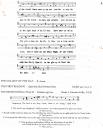
 img018.jpg2178 x 2712 - 1M
img018.jpg2178 x 2712 - 1M
 img019.jpg2352 x 2748 - 842K
img019.jpg2352 x 2748 - 842K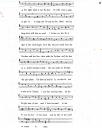
 img020.jpg2064 x 2591 - 802K
img020.jpg2064 x 2591 - 802K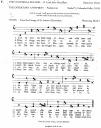
 img021.jpg2136 x 2711 - 1M
img021.jpg2136 x 2711 - 1M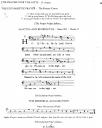
 img022.jpg2100 x 2634 - 511K
img022.jpg2100 x 2634 - 511K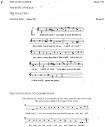
 img023.jpg2129 x 2585 - 550K
img023.jpg2129 x 2585 - 550K
 img024.jpg2094 x 2724 - 722K
img024.jpg2094 x 2724 - 722K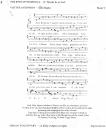
 img025.jpg2141 x 2591 - 740K
img025.jpg2141 x 2591 - 740K
 img026.jpg2069 x 2622 - 1009K
img026.jpg2069 x 2622 - 1009K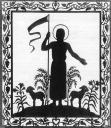
 img027.jpg1488 x 1710 - 618KThanked by 1canadash
img027.jpg1488 x 1710 - 618KThanked by 1canadash -
The font is HighTower.
A fine one, at that.
This is very nice. Makes me think of old printing press stuff.Thanked by 1M. Jackson Osborn
Welcome to the MusicaSacra Forum!
To participate in the discussions on Catholic church music, sign in or register as a forum member, The forum is a project of the Church Music Association of America.
Categories
- All Discussions21,105
- General Music Discussion8,218
- Job Openings197
- Management of Music Programs850
- Choral Matters533
- Church Documents and Rubrics524
- CMAA Notes302
- Events716
- For Newcomers: Read First26
- Sacred Polyphony546
- Hymnody872
- Gregorian Chant: General2,697
- ↳ Graduale Romanum and Liber Usualis368
- ↳ Graduale Simplex60
- ↳ Semiology63
- Vernacular Plainsong696
- Anglican Use and Anglican Chant68
- Organ, Other Instruments and Repertoire435
- New Composition/Works in Progress1,290
- Recordings230
- Music for Hispanic Ministry159
- Music Education: Children211
- Music Education: General222
- News Items245
- Positions Wanted2
- General Discussion: Catholicism739
- Amusements177
- General Discussion1,033
- Opinions117








